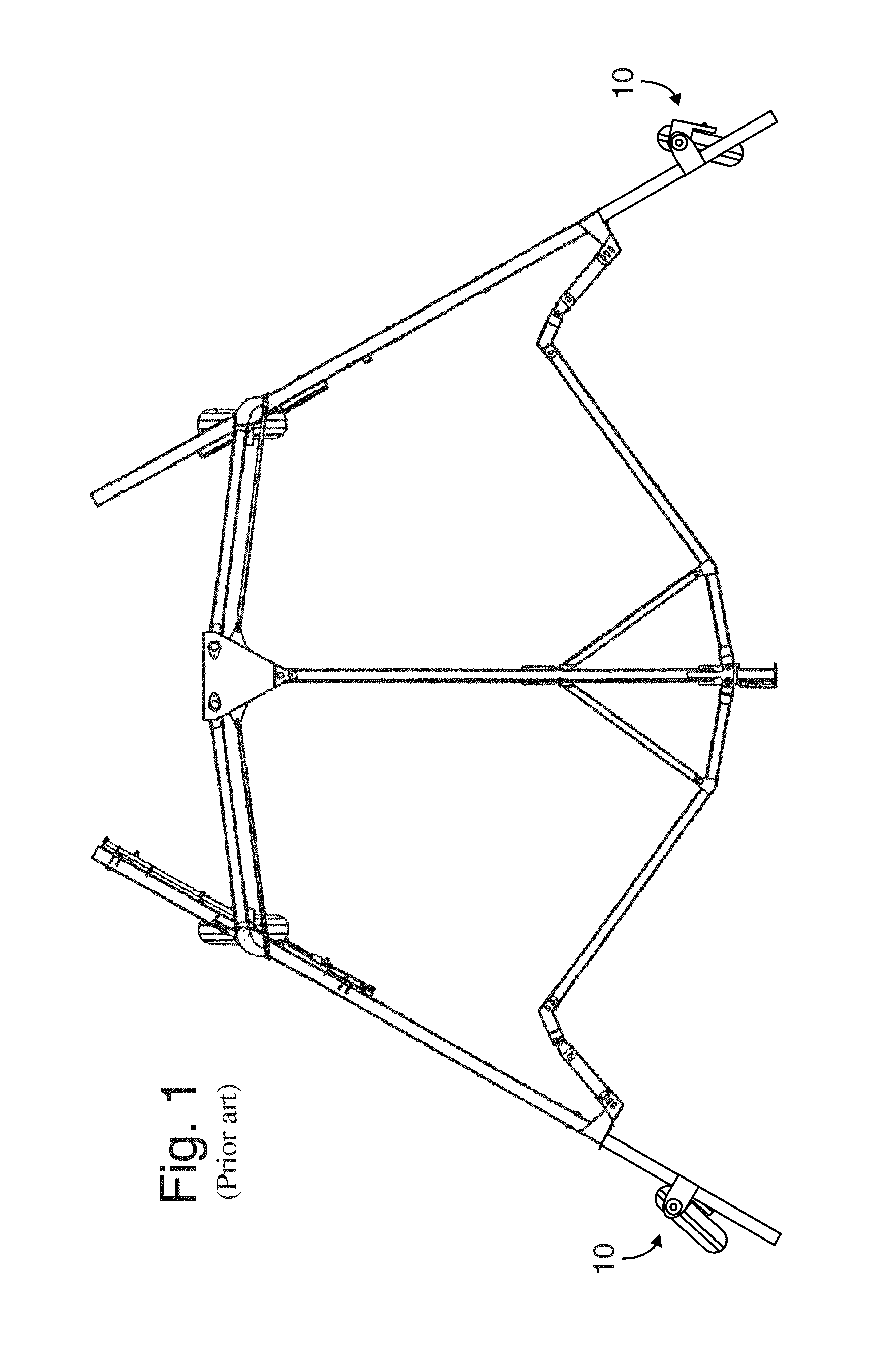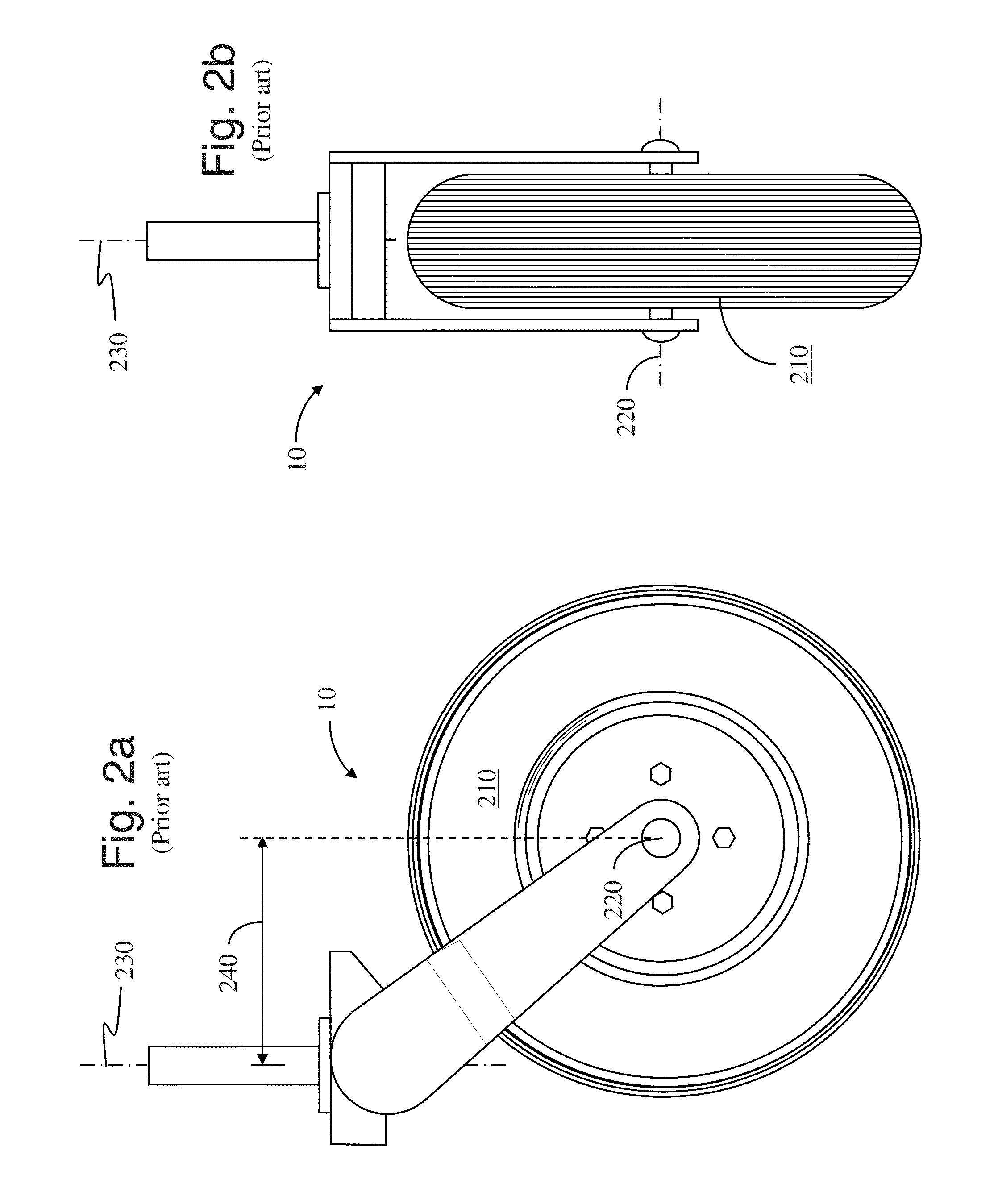Folding frame for an agricultural implement
a technology for agricultural implements and folding frames, which is applied in the direction of soil-working methods, adjusting devices, agricultural tools and machines, etc., can solve the problems of shimmy, damage to the toolbar and other parts of the implement, and the narrowing of the folded implement has proved untenable, etc., to achieve the effect of retaining flexibility in use and variable windrow widths
- Summary
- Abstract
- Description
- Claims
- Application Information
AI Technical Summary
Benefits of technology
Problems solved by technology
Method used
Image
Examples
Embodiment Construction
[0055]Referring now to the drawings wherein like reference numerals indicate identical or corresponding parts throughout the several views, the implement 20 of the present invention is shown in FIG. 3, including a plurality of rake wheels 630, 830 operatively, rotatably attached to a left toolbar 200 and a right toolbar 300. The implement 20 is depicted in the operational position and towed by a tractor 80 in FIG. 3. In FIG. 4, the same implement 20 is depicted in a transport position and towed by the tractor 80.
[0056]An elongated tongue member 100 is shown in FIGS. 3, 4 and 7, operatively attached at a front end to a hitch structure 22 while at a rear end the elongated tongue member 100 is disposed in and extends through a slide box 106. The slide box 106 is operatively, rigidly attached to a frame 107. The frame 107 comprises downwardly depending portions for rotatably mounting ground-engaging transport wheels 102.
[0057]The tongue includes a hitch 104. The hitch 104 is supported b...
PUM
 Login to View More
Login to View More Abstract
Description
Claims
Application Information
 Login to View More
Login to View More - R&D
- Intellectual Property
- Life Sciences
- Materials
- Tech Scout
- Unparalleled Data Quality
- Higher Quality Content
- 60% Fewer Hallucinations
Browse by: Latest US Patents, China's latest patents, Technical Efficacy Thesaurus, Application Domain, Technology Topic, Popular Technical Reports.
© 2025 PatSnap. All rights reserved.Legal|Privacy policy|Modern Slavery Act Transparency Statement|Sitemap|About US| Contact US: help@patsnap.com



